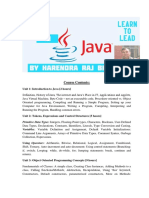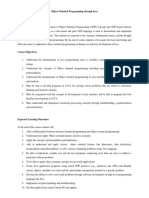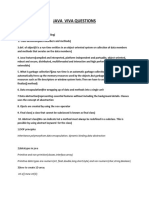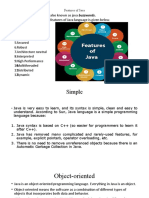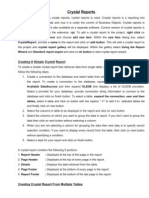0% found this document useful (0 votes)
2 views4 pagesOOPs Java Viva Questions
The document provides a comprehensive overview of Java fundamentals and object-oriented programming concepts, including definitions of Java, JDK, JRE, and JVM. It covers key topics such as classes, objects, inheritance, encapsulation, abstraction, polymorphism, exception handling, and multithreading. Additionally, it explains the structure of Java source files, method overloading vs overriding, and the lifecycle of threads.
Uploaded by
Ravikant ChoubeyCopyright
© © All Rights Reserved
We take content rights seriously. If you suspect this is your content, claim it here.
Available Formats
Download as PDF, TXT or read online on Scribd
0% found this document useful (0 votes)
2 views4 pagesOOPs Java Viva Questions
The document provides a comprehensive overview of Java fundamentals and object-oriented programming concepts, including definitions of Java, JDK, JRE, and JVM. It covers key topics such as classes, objects, inheritance, encapsulation, abstraction, polymorphism, exception handling, and multithreading. Additionally, it explains the structure of Java source files, method overloading vs overriding, and the lifecycle of threads.
Uploaded by
Ravikant ChoubeyCopyright
© © All Rights Reserved
We take content rights seriously. If you suspect this is your content, claim it here.
Available Formats
Download as PDF, TXT or read online on Scribd
/ 4


















